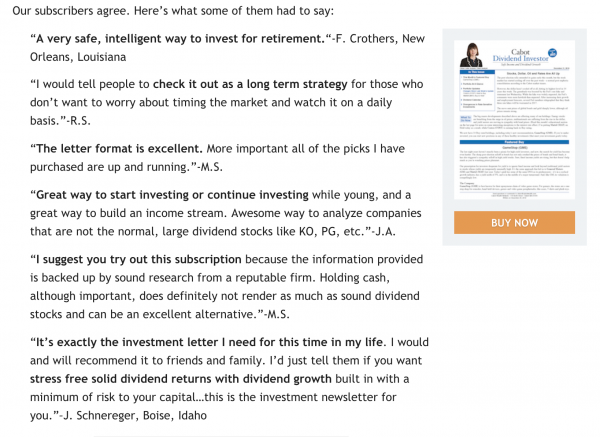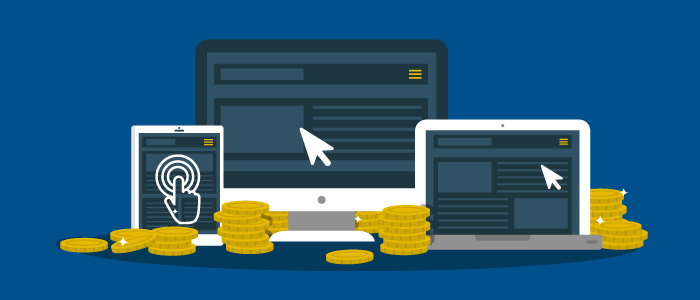
 These days, when people talk about newsletter best practices, they’re usually referring to free email newsletters, used as a marketing tool to drive inbound traffic to websites. But because some of us are old-time journalists here at Mequoda, we also think fondly of paid newsletters, a classic journalistic form that survives today in the digital era through newsletter websites.
These days, when people talk about newsletter best practices, they’re usually referring to free email newsletters, used as a marketing tool to drive inbound traffic to websites. But because some of us are old-time journalists here at Mequoda, we also think fondly of paid newsletters, a classic journalistic form that survives today in the digital era through newsletter websites.
Many publishers earn a good living publishing paid newsletters, and we’d like to encourage any publisher considering them as a business opportunity to consider some paid newsletter best practices in order to generate maximum revenues and reader satisfaction.
[text_ad]
First, let’s define newsletters, as opposed to magazines and journals.
Content
- Magazine: a periodical publication with articles, stories, and pictures on multiple subjects by multiple authors; the creation process is typically research-oriented, long-form journalism
- Newsletter: a periodical publication with articles about one main subject by one or more authors; the creation process is usually short-form journalism, including curation of other content
- Journal: a scholarly publication containing articles written by researchers, professors and other experts, which focuses on a specific discipline or field of study; the creation process is usually research-heavy, long-form journalism
Audience
- Magazine: written for the general public; typically even special interest magazines are written with a general audience in mind, requiring minimum technical jargon or specialized language
- Newsletter: written for a group of people with a common interest; may contain more technical jargon or specialized language not readily understood by the general public that doesn’t share the interest or common bonds of the newsletter audience
- Journal: written for a small audience of professionals or academics, not general readers
Distribution
- Magazine: available by subscription or from newsstands
- Newsletter: available by subscription to interested subscribers or distributed to members of an organization
- Journal: available by subscription
Business model
- Magazine: often, but not always, heavily supported by advertising
- Newsletter: supported primarily by subscriptions or organizational membership fees (club dues)
- Journal: supported by subscriptions
But is it true that newsletters are a dying breed?
They may be, at least according to Ronn Levine, Editorial Director at the Specialized Information Publishers’ Association (SIPA), a division of the Software & Information Industry Association (SIIA).
The fact that SIPA is a division of a larger brand indicates something of the fate of newsletters. SIPA began life in the heyday of newsletters in the 1960s as the Independent Newsletter Association, morphed into the Newsletter Association of America in 1977, went through several other name changes, and acknowledged the changing publishing environment by becoming the Newsletter & Electronic Publishers Association in 1999.
After another name change to the current one, when the word newsletters disappeared from it entirely, SIPA was eventually merged into SIIA in 2012. As Levine notes, “SIPA is probably moving away from the term “newsletter” and maybe even the idea a bit.”
“Our members are distributing information in so many different ways now; newsletter is just one of them. There are ezines and publications, dailies, blogs, webinars, forecasts, alerts, videos, tweets, etc. The journalism is still top-notch; it’s just the delivery that is taking new forms. We want to reach audiences where they are, whether that’s through print, desktop, or mobile.”
[text_ad]
Paid newsletter best practices
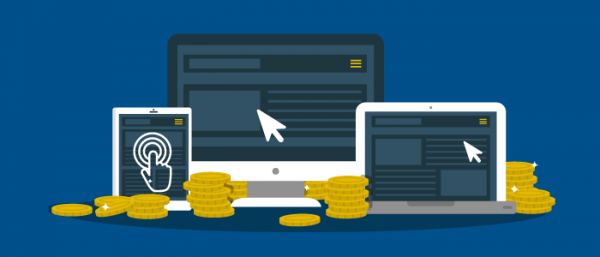
Nevertheless, with newsletters representing a less labor-intensive publishing format, they still have a certain appeal. Investing, health, travel, and B2B topics like human resources, business communications and professional advancement are still popular niches for newsletters. Here are some paid newsletter best practices that are used by the very best among these publications.
Paid newsletter best practices, #1: Set up the right website
One of Mequoda’s identified subscription website archetypes is called a newsletter subscription website. It’s set up solely to sell subscriptions to its related newsletter, and to provide access to issues of the newsletter. Without a newsletter website, you’ll have a product but no subscribers.
A newsletter subscription website’s overall objective is selling subscriptions and providing customer service to existing subscribers.
These websites are fairly simple: The home page consists of a free area, with content that focuses on the benefits of becoming a subscriber to the related publication – a sales letter – and conversion architecture where a visitor can subscribe to FREE content sent by email.
It also has a password-protected private area, where paid subscribers can view an HTML, responsive version of the current issue of the digital newsletter or download it in PDF format, as well as access and/or download back issues and other premium content.
Like all premium models, a newsletter website should be paired with an affinity (free) portal which promotes the newsletter website and does the heavy lifting of SEO and social media.
A good example of this pairing is Cabot Wealth Network‘s free portal. Under the “daily” tab, visitors get access to specially curated free content about investing in stocks.
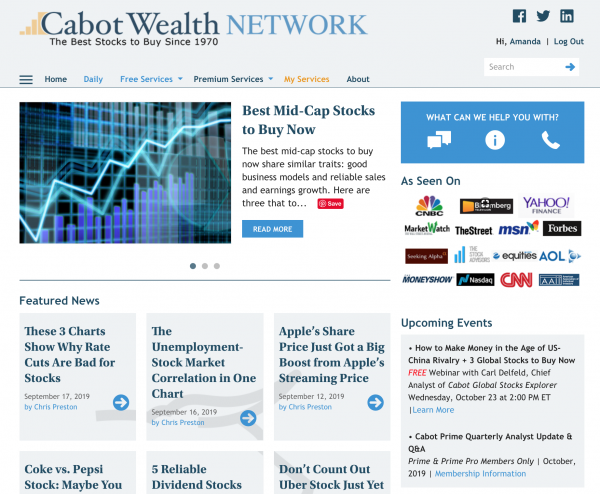
Once you sign up from the portal to be a FREE email subscriber, you’ll get promotions for the premium newsletters and for the all-access membership products, Cabot Prime and Cabot Prime Pro.
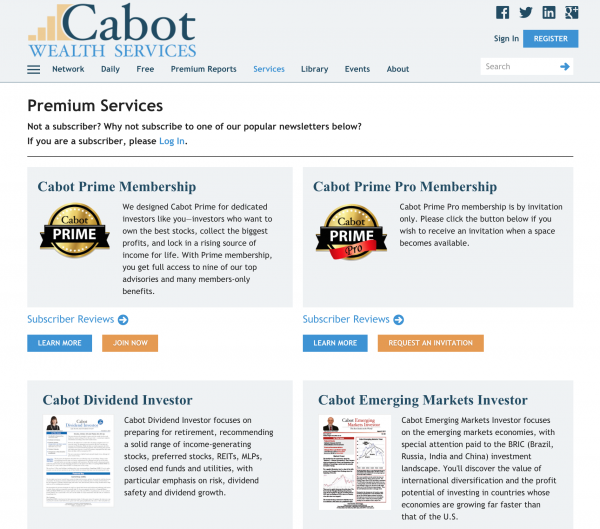
Paid newsletter best practices, #2: Offer a free email newsletter
Just because you’re in the business of selling newsletter subscriptions doesn’t mean you’re excused from publishing the Mequoda best-practice free email newsletter as a marketing and traffic-driving tool.
You may not sell advertising, but an email newsletter is a perfect place for promoting your own products. And you’ll need to build your email file in the same way as magazine publishers do: with the right conversion architecture. Give away something free in exchange for an email address, which is relevant to the search that brought visitors to your site, and you’re good to go! And speaking of giving away something free …
Paid newsletter best practices, #3: Offer a free report
All Mequoda portals offer free ebooks, reports, or white papers to get visitors to become email subscribers. Those who download the freebie are informed that they’re also now subscribed to the free newsletter. Cabot Wealth Daily uses the “death star” floater for new visitors to encourage them to sign up for one of their free reports about the best stocks to buy this month.
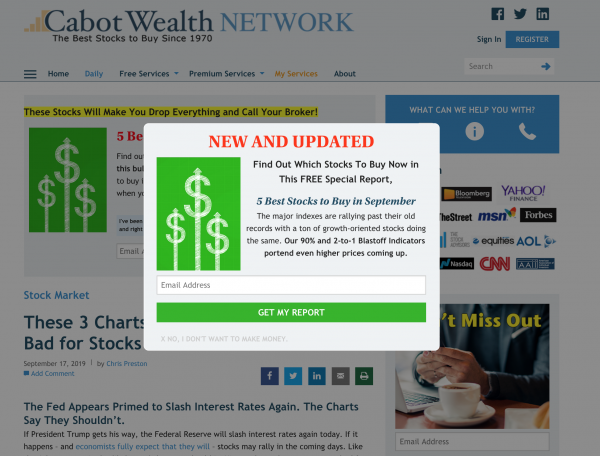
They also have an exit floater for free reports, when they predict someone is going to leave the site—it’s a “last-chance-before-you-leave” opportunity to get the offered FREE report about the best stocks to buy this month.
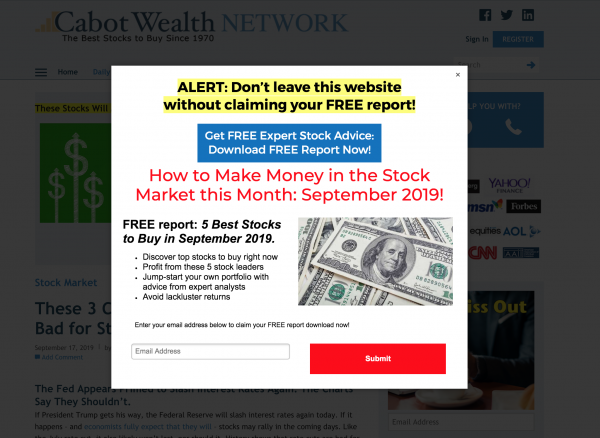
Paid newsletter best practices, #4: Add value
Like magazine publishers, newsletter publishers can benefit by creating an all-access package that allows subscribers to get access to current and past issues. Cabot offers the Cabot Wealth Library, which serves up an archive of past issues to current subscribers of each newsletter. Additionally, they sell an all-access pass with memberships in Cabot Prime and Cabot Prime Pro, giving access to new and archived issues of not just one, but of all their newsletters—plus, special access and discounts to their annual Cabot Wealth Summit where members get in-person access to all the stock analysts for more personalized advice.
Paid newsletter best practices, #5: Shine your light
You’ve worked hard to develop your credibility in your niche. Don’t be shy about proving it! Cabot includes testimonials in their sales letters, and we recommend you do, too! If you only sell one newsletter, many publishers we know use the right-hand sidebar to display testimonials prominently.
Over the past two decades, we’ve guided more than 300 niche publishers through the process of transforming themselves from legacy print publishers into multiplatform operations that often dominate their industry niche and generate operating margins that surpass those created by their legacy print business. Learn more about how we can help you apply these strategies to your publishing business by scheduling a FREE consultation today.
What are newsletter best practices you follow?
This article was originally published in 2012 and has been updated to reflect our current best practices.
